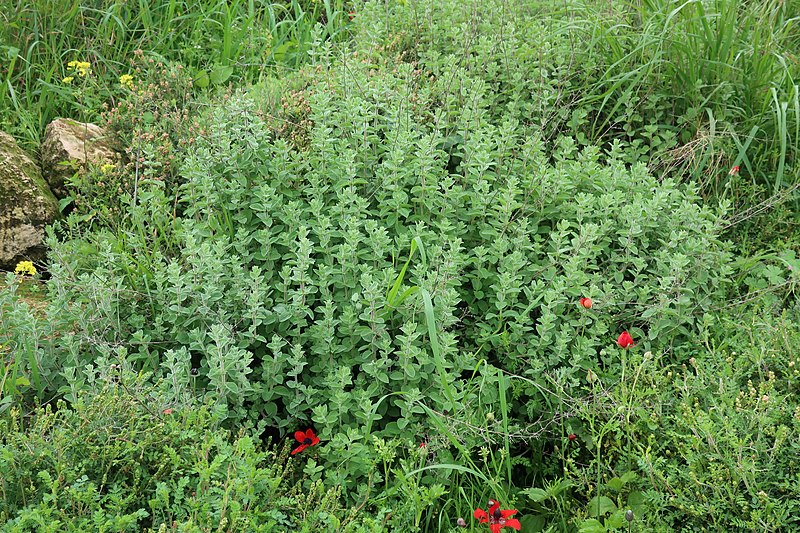Cannabis is rich with aromatic terpenes that work synergistically with the plant’s cannabinoids. One such terpene is terpinene.
What is terpinene?
The terpinenes are a group of isomeric hydrocarbons. These terpenes are classified as monoterpenes and include α-terpinene, γ-terpinene, and δ-terpinene (aka terpinolene).
Terpinenes are found naturally in various plants, including:
- α-Terpinene and γ-terpinene in tea tree [1]
- γ-Terpinene in cumin [2], coriander seed [3], oregano, and marjoram [4]
- γ-Terpinene and terpinolene in cannabis [5]
Terpinenes can generally be recognized by a fresh, woody, herbaceous, citrusy scent. Manufacturers sometimes use terpinenes as flavoring agents to make oils and fluids smell better.
Terpinene isomers may show up in various cultivars. For example, one popular dispensary reports that terpinolene can be found in cultivars including Jack Herer, Durban Poison, and Super Lemon Haze.
Benefits of Terpinene
You’ll encounter terpinene frequently if you like Indian or Mediterranean food. Or you might use a topical cream containing tea tree oil.
There may be reasons why you should seek out terpinene, as studies show that the compound is associated with various health benefits. Tea tree oil, in particular, is often used in folk medicine remedies. A 2012 study examining tea tree oil found that “from a technical perspective, α-terpinene is a true antioxidant since it autoxidizes rapidly compared with many other compounds, preventing these from degradation.” [1]
It’s also been shown that tea tree oil may have antifungal, antiviral, and antibacterial properties.
Another study that looked into the properties of γ-terpinene determined that “in different models of inflammation, treatment with gamma-terpinene alleviated inflammatory parameters such as edema and pro-inflammatory cytokine production.” [6]
Terpinolene also possesses antioxidant activity and has been found to improve wound healing and reduce inflammation. [7] These examples are just a small assortment of the terpinene isomer’s medicinal characteristics.
Image: Sweet marjoram; Davidbena, Wikimedia Commons, CC BY-SA 4.0
References:
- Rudbäck J, et al. α-Terpinene, an antioxidant in tea tree oil, autoxidizes rapidly to skin allergens on air exposure. Chemical Research in Toxicology. 2012;25(3):713–721. https://doi.org/10.1021/tx200486f. [Impact Factor: 3.739; Times Cited: 71 (Semantic Scholar)]
- Li R, Jiang Z-T. Chemical composition of the essential oil of Cuminum cyminum from China. Flavour Fragr J. 2004;19:311-313. https://doi.org/10.1002/ffj.1302. [Times Cited: 149 (Semantic Scholar); Impact Factor: 2.576]
- Shahwar MK, et al. Characterization of coriander (Coriandrum sativum) seeds and leaves: volatile and non-volatile extracts. International Journal of Food Properties. 2012;15(4):736–747.doi:10.1080/10942912.2010.5000. [Times Cited: 64 (Semantic Scholar); Impact Factor: 2.775]
- Lukas B, Samuel R, Novak J. Oregano or marjoram? The enzyme γ-terpinene synthase affects chemotype formation in the genus Origanum. Isr J Plant Sci. 2010;58(3-4):211-220. doi:10.1560/IJPS.58.3-4.211. [Times Cited: 18 (Semantic Scholar); Impact Factor: 0.721]
- Hillig KW. A chemotaxonomic analysis of terpenoid variation in Cannabis. Biochemical Systematics and Ecology. 2004;32(10):875–891.doi:10.1016/j.bse.2004.04.004. [Times Cited: 117 (Semantic Scholar); Impact Factor: 1.381]
- Ramalho T, Pacheco de Oliveira M, Lima A, Bezerra-Santos C, Piuvezam M. Gamma-Terpinene modulates acute inflammatory response in mice. Planta Medica. 2015;81(14):1248–1254. https://doi.org/10.1055/s-0035-1546169. [Times Cited: 38 (Semantic Scholar); Impact Factor: 3.352]
- de Christo Scherer MM, Marques FM, Figueira MM, et al. Wound healing activity of terpinolene and α-phellandrene by attenuating inflammation and oxidative stress in vitro. J Tissue Viability. 2019;28(2):94-99. doi:https://doi.org/10.1016/j.jtv.2019.02.003. [Times Cited: 17 (Semantic Scholar); Impact Factor: 2.932]








